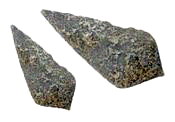Discovery of 110 Archaeological Mounds in Sar Pol-e-Zahab

LONDON, 20 February 2006(CAIS) -- Latest archeological excavations in the city of Sar Pol-e-Zahab resulted in the discovery of 110 historical sites and hills. With the discovery of stone tools and vases belonging to the Neolithic period (6,500 BC).
“110 historical sites were discovered during the archeological excavations. The discovered stone tools and potteries in the area indicate that the history of this area goes back to the Neolithic period and continued to the Parthian and Sasanid dynastic eras. The archeological excavations also led to the discovery of two clay workshops. Although the exact place of the workshops is not clarified yet, the existence of various clays in the region indicates that there must be some clay workshops in the area,” said Shahin Kermanjani, head of archeological excavation team in Sar Pol-e-Zahab.
According to Kermanjani, these excavations were carried out in order to discover the historical sites of Sar Pol-e-Zahab city. Although the excavations have started about 40 days ago, since a lot of expected historical sites have not been discovered yet, it is estimated that the excavations continue for another two months.
“These evidences were discovered in north and northwest of Sar Pol-e-Zahab city. The discovered stone tools were used for peeling fruits, cutting meets, and piercing. These stone tools were made in different sizes,” added Kermanjani.
A large area of these historical hills has been levelled by the farmers for agricultural usage, but archeologists are trying to save the remaining ones. Sar Pol-e-Zahab is located in Kermanshah province. Due to its pleasant weather it was the residence of different tribes during different periods of time. Archeological excavations in this historical site indicate the existence of a continual life in its residential area.
The file of these historical sites will be submitted to the Cultural Heritage and Tourism Organization of Iran in a near future to be inscribed in the list of Iran’s National Heritage.

0 Comments:
Post a Comment
<< Home